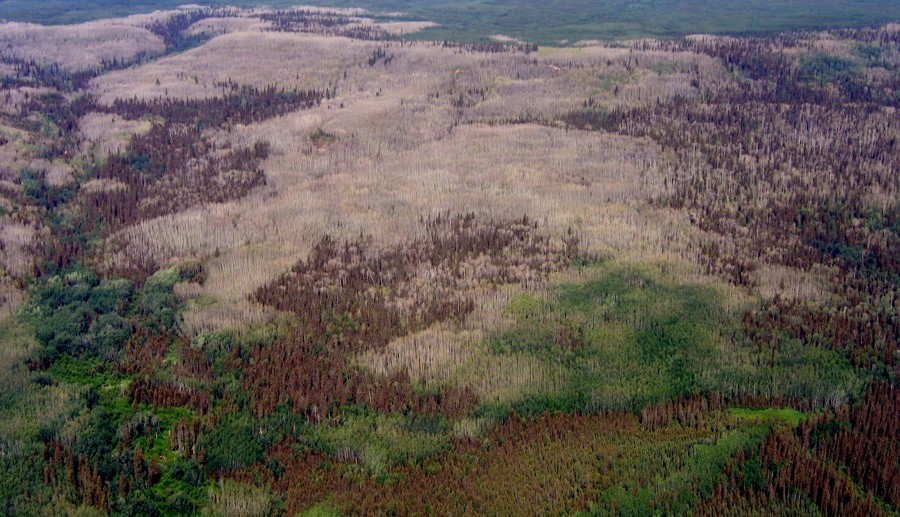Determining the Vulnerability and Resilience of Boreal Forests and Shrubs across Northwestern North America

Principal Investigator
Scott Goetz
Collaborators
Logan Berner (Northern Arizona University), Rosanne D’Arrigo, Laia Andreu-Hayles, and Ben Gaglioti (Lamont–Doherty Earth Observatory)
Overview
Rapid warming in the Arctic has caused shifts in forest and shrub growth over recent decades. Remote sensing and ground-based tree-ring and vegetation observations indicate that the boreal forest and tundra response to warming is variable, with some areas greening (enhanced growth) and others browning (decreased growth). The sign and magnitude of change is often determined by local to regional factors, such as drought stress, and level of disturbance (e.g. fire). Understanding these changes will help determine how the carbon storage of the terrestrial biosphere of the Arctic may be shifting with the pronounced warming effects currently being observed from both field measurements and satellite observations. We investigate the underlying processes that control the vulnerability and resilience of the boreal forest and tundra ecosystems to environmental change across the Arctic.
Previous research has revealed three key points relevant to changes in growth of woody vegetation in boreal and tundra ecosystems. First, according to remote sensing and tree ring data, the relationship between northern tree growth and warming is weakening i.e. as warming continues to increase, increases in tree growth are not keeping up. This is important because it could mean a weakening carbon sink in these systems. Second, tree growth response to temperature varies across these arctic landscapes—some areas show increasing tree growth with increasing temperature, some show decreasing tree growth with increasing temperature. Third, the causes of changing growth responses are unknown.
Our work seeks to build on this research and fill in these knowledge. We focus on how changes in vegetation growth (greening/browning) can vary based on regional differences in species mix, vegetation type, canopy, stand age, elevation and topography, hydroclimate and temperature gradients, disturbance history, and growth variables. We also explore hypotheses that increases in warming have caused a weakening in the relationship between temperature and woody vegetation growth i.e. continued warming causes negative growth relationships (ex. increased temperature means drought stress which means tree mortality) to dominate large scale woody vegetation growth patterns rather than positive growth relationships (e.g. increased temperature means longer growing seasons which means more tree growth). To accomplish this are conducting new field work to fill coverage gaps and update currently existing sites.
At its core, our work revolves around the combination of remote sensing and tree ring data to create a more complete understanding of biome shifts (both browning and mortality, and greening and shrub/tree expansion) now underway across the northwestern North American boreal forests and adjacent tundra, and how resilient these systems are likely to be in the face of continuing warming.
Funding
National Science Foundation Arctic Natural Science Program

